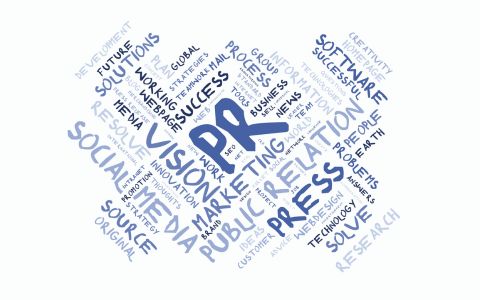Digital PR Vs Traditional PR: Spot the Difference in 2025
10/07/2025
In a hyper-connected and noisy digital world, traditional PR and digital PR have become further apart than ever before. If you are a brand, manufacturer, exporter, SME, or other entity looking to expand your reach and enhance your reputation, digital PR in 2025 is an essential tool in your marketing arsenal, and it’s important to understand the difference between these strategies so you can build a cohesive, modern communications plan.
At Onedot Media, we are here to help you with that. For us, strategy starts with a deep understanding of your brand, business goals, ideal customers, target markets, and overall vision. With that as a foundation, our digital PR approach creates a ripple effect of brand awareness and qualified site traffic growth which in turn future-proofs your reputation online and enhances your organic SEO.
Digital PR & The State of The Industry in 2025
10 years ago, press releases, media kits, and press lists for traditional journalists at print publications, TV, and radio was the state of the art for PR and brand reputation management. However, in today’s digital first world, the practice of PR has changed more in the past 10 years than in the previous 20.
Today, digital PR is more strategic, fast-paced, and data-driven than ever before. This new age of digital communications uses the latest tools in technology and AI, predictive analytics, big data, trendspotting, personalized storytelling, and other strategies to help businesses build and manage reputations in real time.
Automated AI-powered PR tech now allows digital marketing and communications teams to track the pulse of thousands of global digital touchpoints in an instant to see how people are talking about a brand, product, service, or industry. These technologies can also detect trends, predict likely increases in brand mentions, potential threats to reputation, or even flag opportunities to proactively engage or respond to positive conversations. Brands can pivot, change messaging, and even act in real time to respond to or create a media trend before the news cycle has fully developed.

Channels & Media Coverage: Understanding Where The Conversation Is
Traditional PR
- Print newspapers and magazines
- TV & radio broadcasts
- Trade press publications and magazines
- In-person events and conferences
- Press kits and other media materials
Digital PR
- Online and digital media publications
- Industry blogs and niche websites
- Podcasts and online video
- Social media (Instagram, TikTok, LinkedIn, Threads etc)
- Influencer and online creator networks
- Email newsletters
This means that today, although traditional PR channels can still be effective at reaching the right people in the right way, digital PR is essential to engaging customers and reaching target audiences in real time.
Audience: Who You Target & How
Traditional PR is used to target traditional demographic segments, with a focus on reach and audience size. It is reliant on geography and mass media and is not as targeted or audience-specific as digital PR.
Traditional PR only has so much control over exactly who is receiving and listening to their message. The best it can do is place a well-written story in the right channel and hope it reaches the right people.
Digital PR, on the other hand, can be highly targeted to reach exactly the right people and micro-communities, including social media creators, industry bloggers, and online influencers that digital PR professionals can easily identify and connect with. This shift has also led to the democratization of the media, since anyone with a social following or online influence can be an audience or target for PR and this puts brands in control. Brands have the power and authority to identify and reach out directly to specific groups of people without a gatekeeper or third party controlling the conversation.

Measurement & ROI: PR Effectiveness
Traditional PR
- Difficult to measure direct ROI
- ROI KPIs include media impressions, reach, print circulation, and estimated advertising value equivalency (AVE)
Digital PR
- Easier to track and measure effectiveness
- KPIs include:
- Backlinks (SEO)
- Referral traffic to website
- Website traffic sources
- Social media engagements (likes, comments, shares)
- Brand mentions
- Sentiment analysis
- Domain authority
Speed & Agility: Real Time Versus Lead Time
Traditional PR requires a long lead time. Magazines, print publications, radio, and TV all require weeks or even months of notice for an article to run or a broadcast to air. The ability to pivot messaging or respond to new information is minimal.
Digital PR on the other hand is real time. It can reach live audiences, react in seconds to unfolding news or information, and reach micro-communities as they are forming, before the conversation has fully spread or moved on to the next big thing.
Influencers: The New Gatekeepers
The traditional media gatekeepers are no longer relevant in 2025. The focus has now shifted to bloggers, social media creators, online news publishers, and independent writers with thousands (if not millions) of followers across all kinds of social channels.
Building relationships with these people and tapping into their influence is what modern PR is all about and, when done right, can work miracles for your brand and lead to growth. Digital PR involves authentic human-to-human engagement rather than business-to-media messaging, which leads to higher levels of trust and loyalty in a brand.
SEO: The Competitive Advantage of Digital PR
The biggest advantage of modern PR over traditional PR in 2025 is SEO. Google rewards authority and organic SEO has become more and more dependent on domain authority and a well-executed, thoughtfully curated digital PR strategy is one of the fastest ways to gain both.
In the long term, brands that ignore the search benefits of digital PR and neglect to curate their own online visibility in this way are at a competitive disadvantage. Even though they may be able to achieve media coverage and positive PR using traditional channels, they will always struggle to outrank the brands that are proactively building an online presence.
Integration: Digital and Traditional Should Work Together
It’s important to note, however, that this is not to say that digital and traditional PR should not work together. Far from it. Working across silos with your team can ensure that there is no overlap, you are reaching the most efficient and impactful placement for your work, and ultimately that the whole team is working towards the same overall brand goals.
A well-planned traditional press or awards event can be amplified and massively boosted online and the same goes for press wins that you may score online. We specialize in digital PR, but we understand and have experience with the traditional side of things and have a proven track record of success across every channel.
Trends Shaping The World of PR in 2025
- AI-Driven Insights: Predictive Analytics & Sentiment Analysis
- Influencer Partnerships (Micro & Nano)
- Content Personalization: The Power of Tailored Storytelling
- SEO-Driven: The Inextricable Link Between Digital PR and SEO
- The Death of Traditional Gatekeepers
- Real-Time Crisis Management & Monitoring
Why This Matters for Manufacturers, Exporters, & SMEs
The simple answer? If you are in business today and your goal is growth, brand building, competitive differentiation, and you want to succeed in a data-driven digital world then you must take the power and potential of digital PR seriously. Digital PR is not only faster and more strategic it is more measurable, more impactful, and easier to prove ROI for.
Working with Onedot Media, we will not only provide you with all the benefits of a world-class digital PR strategy and service, but we will also show you how a modern, integrated approach is the way to future-proof your brand for the next decade and beyond.
Get in touch with us today and let’s have a chat about how we can help your brand be found by your ideal customers in 2025 and beyond.